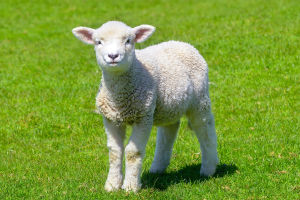Welcome, Lykkers! Have you ever heard the rhythmic tapping sounds that echo through the forest? Those taps are often the handiwork of the Dendrocopos family, a group of woodpeckers known for their unique drumming skills.
Dendrocopos, part of the Picidae family, includes some of the most fascinating woodpeckers. Known for their resilience, resourcefulness, and distinctive calls, these birds bring a lively beat to the woods.
What Makes Dendrocopos Woodpeckers So Special?
The Dendrocopos genus includes several species, such as the great spotted woodpecker and the lesser spotted woodpecker. What sets these birds apart is their unique adaptations for pecking, which allow them to thrive in their natural habitats. With specialized beaks and skull structures, they can drill into trees to create nests, forage for insects, and communicate with other woodpeckers.
The Art of Drumming: More Than Just a Noise
Drumming, the rapid pecking sound Dendrocopos woodpeckers make, is a form of communication. Unlike birds that sing, Dendrocopos woodpeckers use drumming to mark their territory, attract mates, and signal threats. Each species has a different rhythm, allowing them to identify each other based on sound alone. This unique adaptation is vital for survival and an impressive natural skill.
Nesting birds – Great spotted woodpecker (Dendrocopos major)
Video by European Wildlife by Luká
Unique Physical Traits
The physical adaptations of Dendrocopos woodpeckers are a marvel of evolution. Their skulls are specially designed to absorb the impact of pecking, with a bone structure that distributes force, reducing the risk of injury. They also have bristle-like feathers near their nostrils to prevent debris from entering their respiratory system while they’re hard at work.
Diet and Foraging Techniques
Dendrocopos woodpeckers are skilled foragers with a taste for insects, particularly beetle larvae, which they locate within tree bark. By using their powerful beaks and long, sticky tongues, they extract insects from deep within the wood. This foraging behavior helps control insect populations, making woodpeckers valuable to forest ecosystems.
Where to Spot Dendrocopos Woodpeckers
Dendrocopos woodpeckers are found across various continents, from Europe and Asia to parts of North America. They thrive in mixed woodlands, especially those with plenty of mature trees. To spot one, listen for their distinctive drumming and look for trees with small, round holes—signs of woodpecker activity. Early morning or late afternoon is often the best time to catch a glimpse of these busy birds.
How Dendrocopos Woodpeckers Benefit Ecosystems
These woodpeckers play a vital role in their ecosystems. By creating cavities in trees, they provide nesting sites for other animals like squirrels, owls, and small songbirds. Their diet of insects helps manage pest populations, maintaining a balanced forest environment.
Conservation Status
While many Dendrocopos species are common, some face threats from habitat loss and climate change. Conservation efforts, including habitat preservation and awareness campaigns, are essential for protecting these birds. Supporting organizations that work to preserve forest habitats can make a difference in ensuring these incredible birds continue to thrive.
Fun Facts About Dendrocopos Woodpeckers
- Incredible Impact Absorption: Their brains are protected from pecking impacts by a specialized skull structure and spongy bone layer.
- Tongue Length: Their tongues can extend up to three times the length of their beaks, helping them reach insects hidden deep in wood.
- Unique Markings: Each species has distinctive black-and-white markings, with males often sporting a red patch on the head.
Why We Love Dendrocopos Woodpeckers
The Dendrocopos woodpeckers aren’t just birds; they’re a testament to nature’s creativity. With each tap, they remind us of the fascinating ways animals adapt to survive. Whether you’re a birdwatcher or simply someone who loves the outdoors, these woodpeckers bring rhythm and life to any forest.
So, next time you’re exploring the woods, pause and listen for the beat of the Dendrocopos. You might just discover a new appreciation for these extraordinary creatures.


